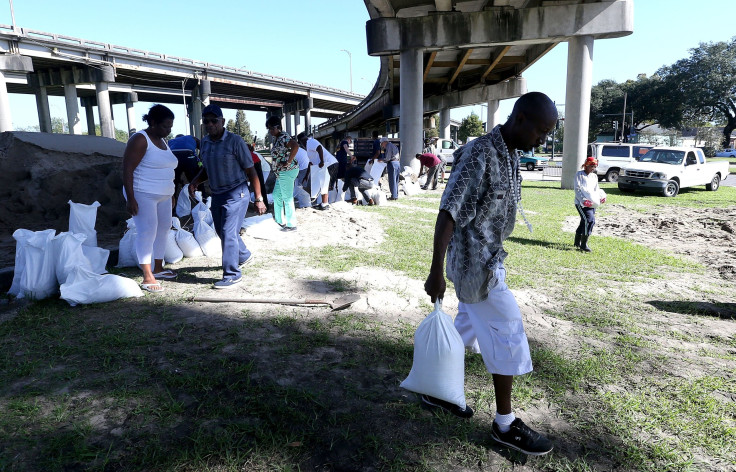Where Will Hurricane Nate Head To Next? Map Shows Potential Destruction

Hurricane Nate is slated to lash at New Orleans and the Gulf Coast late Saturday evening. The storm's arrival is expected to bring "life-threatening" flooding along portions of the area, with the Category 2 storm targeting areas that were hit by Hurricane Katrina in 2005.
Up to six inches of rainfall is expected to hit with isolated totals of 10 inches from Louisiana to Florida's panhandle. This could result in potential flash flooding Monday in areas east of the Mississippi River from the central Gulf Coast, eastern Tennessee Valley and the Appalachian Mountains.
"Nate is a little stronger over the central Gulf of Mexico," the National Hurricane Center said Saturday morning. Friday night reports had stated that Nate was a Category 1 hurricane.
Tropical storm conditions are most likely to begin this afternoon in SE Louisiana & this evening in MS/AL/FL https://t.co/tW4KeGdBFb #Nate pic.twitter.com/0bs1wBz85G
— NHC Atlantic Ops (@NHC_Atlantic) October 7, 2017
#Nate is intensifying as it quickly approaches the Gulf Coast- last chance to prepare for this dangerous #hurricane! https://t.co/tW4KeGdBFb pic.twitter.com/JnjYd14Z2L
— NHC Atlantic Ops (@NHC_Atlantic) October 7, 2017
New Orleans began preparations for the storm ahead of its arrival. The storm is expected to hit near where Hurricane Katrina struck the New Orleans area and the Mississippi Gulf Coast, which had a death toll of 1,833 and over $100 billion in damages.
"Nate is at our doorstep, or will be soon," New Orleans Mayor Mitch Landrieu said at a press conference Friday. "We have been through this many, many times, there is no need to panic."
Landrieu added, "While we are in a stronger place than we were in August regarding pumps and power, if this weather system strengthens and starts to produce large amounts of rainfall in short periods of time with bursts, we could see some localized flooding."
Landrieu also issued a mandatory evacuation for Venetian Isles, Lake Catherine and Irish Bayou.
A hurricane warning indicates that storm conditions are expected to hit somewhere within the warning area in the next 24 hours. Preparations for protection and safety (i.e. necessary evacuations), therefore, should be completed ahead of this.
Nate first emerged as Tropical Depression 16. This classification would indicate that the development's wind speed is less than 39 mph. It was later bumped up to a tropical storm Thursday as it made landfall in Central America.
Nate has killed at least 22 people in the region. The storm reportedly claimed the lives of seven people as it made landfall in Costa Rica, and later killed 15 in Nicaragua. Officials have reported that 15 people are missing in Costa Rica. At least 5,000 Costa Ricans have been put up in shelters.
An October hurricane along the Gulf Coast is rare. Hurricane season technically ends Nov.30, but the likelihood of a strong storm hitting reduces after September ends. The origin locations of October storms, however, will also shift from where they're normally formulated.
"Instead of looking toward the central and eastern Atlantic Ocean, tropical storms and hurricanes more commonly develop in the western Caribbean Sea, [the] eastern Gulf of Mexico and far western Atlantic Ocean in October," Weather.com reported Saturday.
© Copyright IBTimes 2024. All rights reserved.












